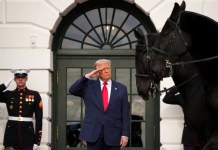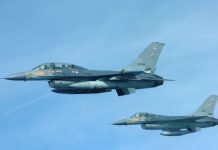Recently, the US approved the sale of 16 MK 54 lightweight torpedoes and ten AGM-84L Harpoon Block II air-launched missiles to India. The total size of the sale is expected to be around $155 million.
Pakistan ‘Really Upset’ By Sale Of Advance Missile Defense System To India By The US
This clearance of lightweight torpedoes and Harpoon missiles, as EurAsian Times reported earlier, comes in the backdrop of India agreeing to supply its Hydroxychloroquine (HCQ) stock to the US on President Donald Trump’s personal request, who was emphatic in thanking his friend – Indian PM Narendra Modi.
As per the Defense Security Cooperation Agency’s (DSCA) press release, the proposed sale will enhance India’s interoperability with the United States and other allied forces.
The DSCA further stated that “India will use the enhanced capability as a deterrent to regional threats and to strengthen its homeland defense” and the that the deal will “improve the security of a major defensive partner, which continues to be an important force for political stability, peace, and economic progress in the Indo-Pacific and South Asia region.”
JF-17 vs Rafale: Why Pakistani JF-17 Thunder Poses A Serious Threat To Indian Rafale Fighter Jets?
The defense purchase seemingly comes across as a strategic victory for India’s naval forces (who receive the least funds of all the three services), especially when Chinese expansionism in the Indian Ocean has alarmed many traditional powers like the US, UK, France, and its neighbors Japan and Australia.
In 2016, the EurAsian Times extensively analyzed the benefits of the US recognizing India as a “Major Defence Partner”, which would permit New Delhi to buy more advanced and sensitive technologies from the US on a par with that its closest allies and partners.
The anti-ship missiles and torpedoes are set to be integrated with the P-8I aircraft, which have been dubbed as the submarine killer. The Harpoon missiles are used by around 30 countries which include South Korea, Taiwan, Australia, Canada and many more and have been extensively tested and appreciated.
How Special Forces Of India, MARCOS & Para SF Compete Against US Navy SEALs?
As Indians are celebrating the forthcoming arrival of the Harpoons, defense experts in the US are talking about retiring and replacing them with better, newer missiles.
Charlie Gao, writing for the National Interest believes “despite its successes, the time for the Harpoon’s time in service appears to be running out. Harpoons are being removed from Arleigh Burke-class destroyers, the U.S. Navy’s most numerous surface combatant.”
The DSCA statement itself clears that “the proposed sale of this equipment and support will not alter the basic military balance in the region.” The Harpoon missiles have now entered their fifth decade of existence since they were first produced by Boeing in 1977.
Russia Offers India To Resume Development of 5th Generation SU-57 Jet Program
Moreover, in 2018, the US Navy opted for the Norwegian-built new Naval Strike Missile (NSM) over the Harpoons as the next over-the-horizon anti-ship missile to arm its Littoral Combat Ships. In fact, there is a belief that as Harpoons are increasingly becoming outdated, and could be partially replaced with the NSM.
The NSM is low observable and reduces the chances for an enemy ship to detect and react to the missile. Therefore, the US selling the Harpoons to India might be more about profiteering over whatever is left of an outdated missile than helping an underprepared ally.
Indian Para SF vs Pakistani SSG Commandos – Whom Would You Bet-On In A Rescue Operation?
Officers in the US Navy have stated that the Harpoons were initially designed for the Cold War era. As the Russian threat declined and the nature of conflict changed, the Harpoons lost flavor with the US defense establishment. The money went to build better weapons which were lighter, faster, and more difficult to detect.
However, the good news for the Indian defense establishment is that not everyone shares the same view of the Harpoons. In the RIMPAC (Rim of the Pacific) exercise of 2018, the Harpoons performed exceedingly well: all six of them hit their targets perfectly.
Pakistan Navy SEALs Have Access To Mystery Submarines Stationed In Karachi – Reports
So much for the talks of near-obsoleteness of the veteran missiles. “No question… From my perspective, it worked flawlessly,” was what Commander of U.S. Pacific Fleet’s Submarine Force Rear Admiral Daryl Caudle said of the Harpoon.
It also needs to be put into perspective that the Indian Navy faces a resource crunch and needs to make smart decisions. Harpoons offer an economical, more familiar alternative (India first purchased 24 AGM-84L Block II Harpoons in 2010 for the Indian Air Force).
INS Vikramaditya – Russian Build Aircraft Carrier Is A Disaster? OpEd
They can be upgraded and the new Block II+ version and is said to have some critical capabilities that the well-financed western navies often look for. The Indian military, as it is, has great experience in upgrading older weaponry; it still uses a good bunch of Soviet-era military equipments which have become a backbone of the Indian defense establishment.




